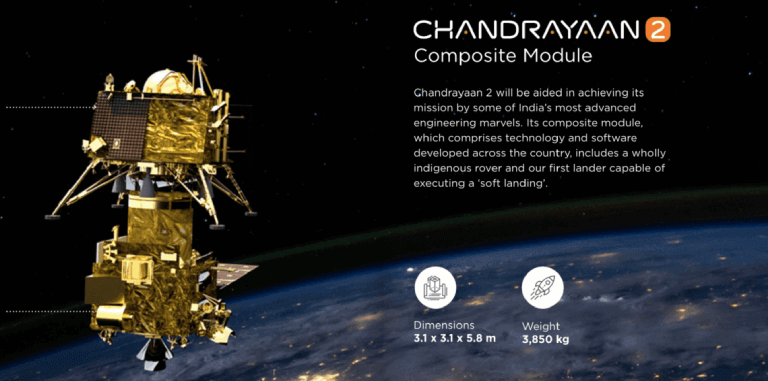
What is Digital India?
Over the last few years, India has made a large scale shift toward e-governance. The widest and perhaps most ambitious move in this direction is the launch of The Digital India Programme, an initiative coined by the Government of India. Primarily, The Ministry of Electronics and Information Technology.
The Ministry of Electronics and Information Technology, the title of the department suggests, is concerned with the electronic development of India. As such, The Ministry is geared towards facilitating the move to a developed nation and empowered society. It aims to promote e-Governance, through the sustainable and inclusive growth of Electronics, IT and ITeS industries. Thus, enhancing India’s role in Internet Governance by using a multi-pronged approach that includes developing human resources, promoting R&D and innovation, enhancing efficiency through digital services, and ensuring secure cyberspace. The official website lists its objectives as follows,
- e-Government: Providing e-infrastructure for delivery of e-services
- e-Industry: Promotion of electronics hardware manufacturing and IT-ITeS industry
- e-Innovation / R&D: Implementation of R&D Framework – Enabling creation of Innovation/ R&D Infrastructure in emerging areas of ICT&E/Establishment of mechanism for R&D translation
- e-Learning: Providing support for the development of e-Skills and Knowledge network
- e-Security: Securing India’s cyberspace
- e-Inclusion: Promoting the use of ICT for more inclusive growth
- Internet Governance: Enhancing India’s role in Global Platforms of Internet Governance.
While the Digital India initiative is primarily initiated by The Department of Electronics and Information Technology, a number of other Ministries are also involved. These include The Ministry of Communications & IT, Ministry of Rural Development, Ministry of Human Resource Development, Ministry of Health and a few more. This should give you an idea of just how large and far-reaching this programme is intended to be.
Coming back to Digital India and what it is. So, as you may have guessed, Digital India was introduced in order to make Government services available to citizens electronically. India has been striving to make e-governance successful in fulfilling all its core objectives. As such, this is not the first time that India has tried to make this large scale shift. e-Governance has actually been put in place since the 1990’s. But, although there have been successful e-governance projects across the country, e-Governance as a whole, it is said, needs another push. Hence, the Digital India Programme was proposed as a far more comprehensive and transformed plan to give the e-governance initiative the thrust it needed to ensure inclusive and widespread growth.
The key underlying idea is empowerment through the digital. But this needs to be unpacked a little. So, let’s start with the objectives. Digital India has three main objectives, and how to achieve each one.
- Making Digital Infrastructure a Core Utility for Every Citizen
- Availability of high speed internet as a core utility for delivery of services to citizens
- Cradle to grave digital identity that is unique, lifelong, online and authentic to each citizen
- Mobile phone & bank accounts enabling citizen particip
 ation in digital & financial spaces
ation in digital & financial spaces - Easy access to a Common Service Centre
- Shareable private space on a public cloud
- Safe and secure cyber-space
- Ensuring Governance and Services on Demand
- Seamlessly integrated services across departments or jurisdictions
- Availability of services in real-time from online & mobile platforms
- All citizen entitlements to be portable and available on the cloud
- Digitally transformed services for improving ease of doing business
- Making financial transactions electronic & cashless
- Leveraging Geospatial Information Systems (GIS) for decision support systems & development
- Empowering Citizens Digitally
- Universal digital literacy
- Universally accessible digital resources
- Availability of digital resources/services in Indian languages
- Collaborative digital platforms for participative governance
- Citizens not required to physically submit Govt. documents/certificates
For the purposes of clarity and to bring it all together so far, The Digital India Programme as is described as,
…a flagship programme of the Government of India with a vision to transform India into a digitally empowered society and knowledge economy.
Essentially, the Government of India has launched the Digital India Programme with a mission to push the evolution of public services through the use of information technology. This includes, for instance, plans to give rural areas access to high-speed internet networks. In this sense, implementing this programme bridges the gap between the departments within The Government of India and the people. In the same vein, the time it would take for essential services to reach citizens is drastically minimized through digital means as well. The programme would further ensure local electronic manufacturing and would generate more jobs for Indians. Government Transparency and accessibility are thus two primary takeaways from Digital India.
In 2015, the Digital India initiative was inaugurated at a ceremony in New Delhi by kicking off Digital India Week. CEO’s from India and all around the world were present, having committed over Rs. 4.5 lakh crore towards the programme in order to ensure its success.
What are Digital India’s Key Initiatives?
There are nine fundamental pillars of the Digital India Programme.
1. Broadband Highways:
The aim of this pillar was to connect 25,0000 Gram Panchayats through high-speed internet by December of 2016. Broadband Highways had a generous investment of Rs.32,000 crore. in technical terms, this entails Nationwide internet infrastructure through National Optic Fibre Network (NOFK). Broadband Highways can be put into three simple steps,
- Broadband for all Rural
- Broadband for all Urban
- National Information Infrastructure
2. Universal Access to Mobile Connectivity:
The aim of this initiative was to connect all the remaining 42,300 villages that are currently unconnected through mobile telephone, with an investment of Rs.16, 000 crores by the financial year 2018.
3. Public Interest Access Program- National Rural Internet Mission:
This initiative aimed to make government services available to all Gram Panchayats through Common Service Centres (CSCs) by March 2017. It had an investment of Rs. 4,750 crore. In addition, 1,50,000 Post-Offices were to become Multi-service Centres by 2016.
4. E-Governance:
As everything stated above explains, the aim of this initiative was to simplify government business processes through the introduction of IT, online interface and tracking across departments, integration of services and platforms-UIDAI, Payment Gateway, Mobile Platforms, etc. The website explains this initiative quite well,
- Government Business Process Re-engineering using IT to improve transactions
- Form Simplification, reduction
- Online applications and tracking, Interface between departments
- Use of online repositories e.g. school certificates, voter ID cards, etc.
- Integration of services and platforms – UIDAI, Payment Gateway, Mobile Platform, EDI
- Electronic Databases – all databases and information to be electronic, not manual
- Workflow automation inside government
- Public Grievance Redressal – using IT to automate, respond, analyze data to identify and resolve persistent problems – largely process improvements
- To be implemented across government – critical for transformation.
5. e-Kranti:
The aim is the electronic delivery of services be it education, agriculture, health, justice or financial inclusion.
Technology for Education – e-Education: All Schools connected with broadband Free wifi in all schools (250,000), and a digital Literacy program MOOCs, introduced develop pilot Massive Online Open Courses
Technology for Health – e-Healthcare: Online medical consultation, medical records, medicine supply. Plus, Pan-India exchange for patient information. Pilots – 2015; Full coverage in 3 years
Technology for Planning: GIS-based decision making and the National GIS Mission Mode Project
Technology for Farmers: Real-time price information, online ordering of inputs, online cash, loan, relief payment with mobile banking
Technology for Security: Mobile Emergency Services
Technology for Financial Inclusion: Mobile Banking, Micro-ATM program, CSCs/ Post Offices
Technology for Justice & Security: e-Courts, e-Police, e-Jails, e-Prosecution, National Cyber Security Co-ordination Centre
6. Information for All:
The aim of this initiative is to start the online hosting of data and proactive engagement with citizens through social media and web portals such as MyGov.in. Citizens will have open access to information via an open data platform.
- Online Hosting of Information & documents
- Citizens have open, easy access to information
- Open data platform
- Government pro-actively engages through social media and web-based platforms to inform citizens
- MyGov.in
- 2-way communication between citizens and government
- Online messaging to citizens on special occasions/programs
- Largely utilise existing infrastructure – limited additional resources needed
7. Electronic Manufacturing:
The aim is Net Zero imports by 2020 through an increased level of local manufacturing of electronic items such as Set-Top Boxes, VSATs, Mobiles, Consumer and Medical Electronics. Efforts will be made to provide clarity on taxation, incentives, skill development and government procurement.
- Target NET ZERO Imports is a striking demonstration of intent
- The ambitious goal which requires coordinated action on many fronts
- Taxation, Incentives
- Economies of Scale, Eliminate cost disadvantages
- Focused areas – Big Ticket Items
- FABS, Fab-less design, Set-top boxes, VSATs, Mobiles, Consumer & Medical Electronics, Smart Energy meters, Smart cards, micro-ATMs
- Incubators, clusters
- Skill development
- Government procurement
8. Information Technology Training for Job Creation:
The aim is to train students in small towns and villages for IT sector jobs, with a target of training 1 crore students in the next five years to prepare them fully for the IT workforce. It will do so by setting up BPOs in each North Eastern State. Telecom service providers will train 5,00,000 people in five years to create a Telecom ready rural workforce to cater for their own needs.
9. Early Harvest Programme:
All Universities across the country were to be connected through Wi-Fi by December 2015. An E-mail was set to be the primary mode of communication, and thus the goal was to secure e-mail services across all departments of the government. Further, Biometric attendance in all Ministries and Departments was to be initiated.
 Where does Aadhaar Fit?
Where does Aadhaar Fit?
Under those key 9 pillars, you will find a number of important points. The introduction of the Aadhaar Card is one of them. Aadhaar card identity platform is one of the key pillars of ‘Digital India.’ The aim of the Aadhaar card is to provide every resident of the country with a unique identity or Aadhaar number. The largest biometrics-based identification system thus far in India, Aadhaar is a strategic policy tool for social and financial inclusion, public sector delivery reforms, managing fiscal budgets, increase convenience and promote hassle-free people-centric governance. It is unique and robust enough to eliminate duplicate or fake identities and may be used as a basis/primary identifier to roll out several Government welfare schemes and programmes for effective service delivery thereby promoting transparency and good governance.
Pros and Cons?
Making the shift to the digital world has, in many ways, been advantageous to India. To be sure, I am only touching upon the very basics. Please do look at the official websites for detailed information. Ok, so, let’s start with safety. While safety was initially a concern, now there are multiple layers of protection in place. For instance, the One-Time-Password (OPT) adds an extra layer of safety to your online activity. By 2018, 1.23 billion people in India have Aadhaar cards, 1.21 billion owned mobile phones, and 35% of the population began using the internet, spiking growth in e-commerce. The eVisa is another benefitting initiative. The Ministry of Tourism supported the initiative regarding the implementation of Tourist Visa on Arrival enabled with Electronic Travel Authorisation (ETA, renamed as e-Tourist Visa), The e-Tourist Visa enables prospective visitors to apply for an Indian Visa from their home country online without visiting the Indian Mission. They can also pay the visa fee online, making things a lot easier. E-Education, mentioned above, is another example, developing Massive Open Online Courses (MOOCs) beneficial for education. This initiative provides citizens with access to large amounts of knowledge, along with a forum for students and teachers to debate, discuss and form meaningful conversations. If you’re looking for a few more benefits to Digital India, follow this link.
Now that we have seen the advantages of Digital India, let’s look at a few disadvantages. Well for starters, we still have a long way to go in terms of the global e-governance standards. Moreover, there is still a large digital divide between rural and urban areas, which needs to be worked on further. While Digital India does deserve praise, its success also has to do with global trends and the exponential growth and permeation of the internet. Perhaps most importantly, digital education has been the toughest goal to achieve. Finally, a lot of rural India still lacks access to electricity, while other areas only have limited access.
So, while we have seen some of the benefits of digitization, there is still a lot of work to be done, which is fine. The groundwork has been laid.
Thank you for reading!
Need help funding your college tuition? Download StuCred for a quick and easy, interest-free, real-time student loan!
Tags: Digital India Programme, digital India recruitment 2019, digital India initiative, digital India services, Digital, digital media programme 2019











